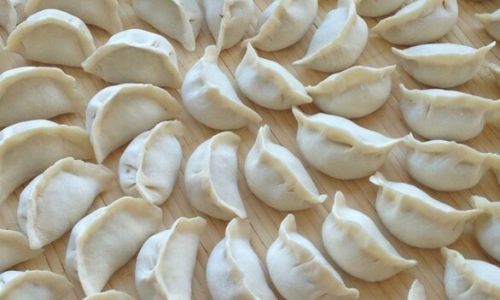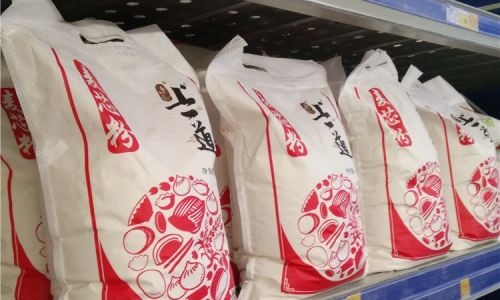Table of content
In the realm of baking, understanding the differences between high, medium, and low gluten flours is crucial for achieving the desired texture and structure in your baked goods. Gluten, a protein found in wheat flour, plays a pivotal role in dough elasticity and strength, directly influencing the final outcome of your pastries, breads, and other baked delights. While professional bakers often have a keen eye for these distinctions, home bakers might find the process of identifying flour types a bit daunting. This article aims to demystify the art of determining flour’s gluten content, guiding you through the essential factors and methods to accurately classify flour as high, medium, or low gluten.
Understanding Gluten and Its Role in Baking
Gluten is formed when the two proteins present in wheat flour, gliadin and glutenin, come into contact with water and undergo a process called hydration. This protein network gives dough its stretchy, elastic quality, allowing it to rise and hold its shape during baking. The amount of gluten present in flour varies depending on the type and variety of wheat used, as well as the milling process.

- High Gluten Flour: Contains approximately 12.5% to 14% protein. It is ideal for breads that require a robust structure to support yeast fermentation and oven spring, such as artisan breads, bagels, and pizza dough.
- Medium Gluten Flour (All-Purpose Flour): Typically has a protein content ranging from 10% to 11.5%. As its name suggests, it is versatile and suitable for a wide range of baking needs, from cookies and cakes to some types of bread.
- Low Gluten Flour (Cake and Pastry Flour): Contains 8% to 9.5% protein. It produces tender, delicate baked goods with a soft crumb, perfect for cakes, pastries, and cookies where a tender texture is desired.
Methods to Determine Flour’s Gluten Content
Checking the Label
The simplest and most direct way to identify the gluten content of flour is to read the label. Commercial flour packages usually specify whether the flour is high, medium (all-purpose), or low gluten. However, this method relies on the manufacturer’s accuracy and may not always be available for locally milled or bulk-bought flours.
Protein Percentage
For those who prefer a more scientific approach, checking the protein percentage listed on the nutritional information panel can be enlightening. While this method isn’t foolproof due to variations in testing methods and labeling standards, it generally provides a good indication. Remember to convert percentages to the approximate gluten content ranges mentioned above.

The Hand Test
Experienced bakers often rely on their senses to gauge gluten levels. Here’s how you can do a basic assessment:
- Feel: Scoop a handful of flour and squeeze it tightly into a ball. High gluten flour will form a cohesive, elastic ball that holds its shape well. Medium gluten flour will form a ball but may crack or flatten slightly. Low gluten flour will barely form a ball and will crumble easily.
- Water Test: Mix a small amount of flour with water to form a dough. High gluten dough will be stretchy and elastic, capable of being stretched into a thin, translucent membrane without breaking. Medium gluten dough will stretch but may tear more easily. Low gluten dough will be sticky and difficult to stretch without breaking immediately.
Baking Tests
While not the most practical for immediate identification, baking tests can provide definitive results:

- Bread Baking: Bake a loaf using the flour in question. High gluten flour will yield a tall, well-structured loaf with a chewy texture. Medium gluten flour might produce a loaf with a slightly shorter rise and a softer crumb. Low gluten flour will result in a dense, flat loaf that may not rise properly.
- Cake Baking: Bake a simple cake recipe. Low gluten flour will produce a tender, delicate cake, while medium gluten flour might yield a slightly firmer texture. High gluten flour could lead to a dense, chewy cake unless modified with additional ingredients to tenderize it.
Practical Tips for Using Different Flour Types
- Blending Flours: If you don’t have the exact type of flour needed, blending different flours can help achieve the desired gluten level. For example, mixing all-purpose flour with a small amount of cake flour can create a flour with lower gluten content suitable for tender cakes.
- Storage Considerations: Flour’s gluten content can be affected by storage conditions. Keep flour in an airtight container in a cool, dry place to prevent rancidity and gluten degradation.
- Substitutions: For gluten-free baking, alternative flours like almond, rice, and oat (if certified gluten-free) can be used, though they behave differently and may require adjustments in recipes.
Conclusion
Mastering the art of identifying and using different gluten levels in flour is a cornerstone of successful baking. By understanding the role of gluten, utilizing labeling information, conducting simple tests, and experimenting with baking, you can confidently navigate the world of flour types and create baked goods that meet your culinary visions. Whether you’re aiming for a light, fluffy cake or a hearty, chewy loaf of bread, the right flour choice is key to unlocking your baking potential. Happy baking!






0 comments